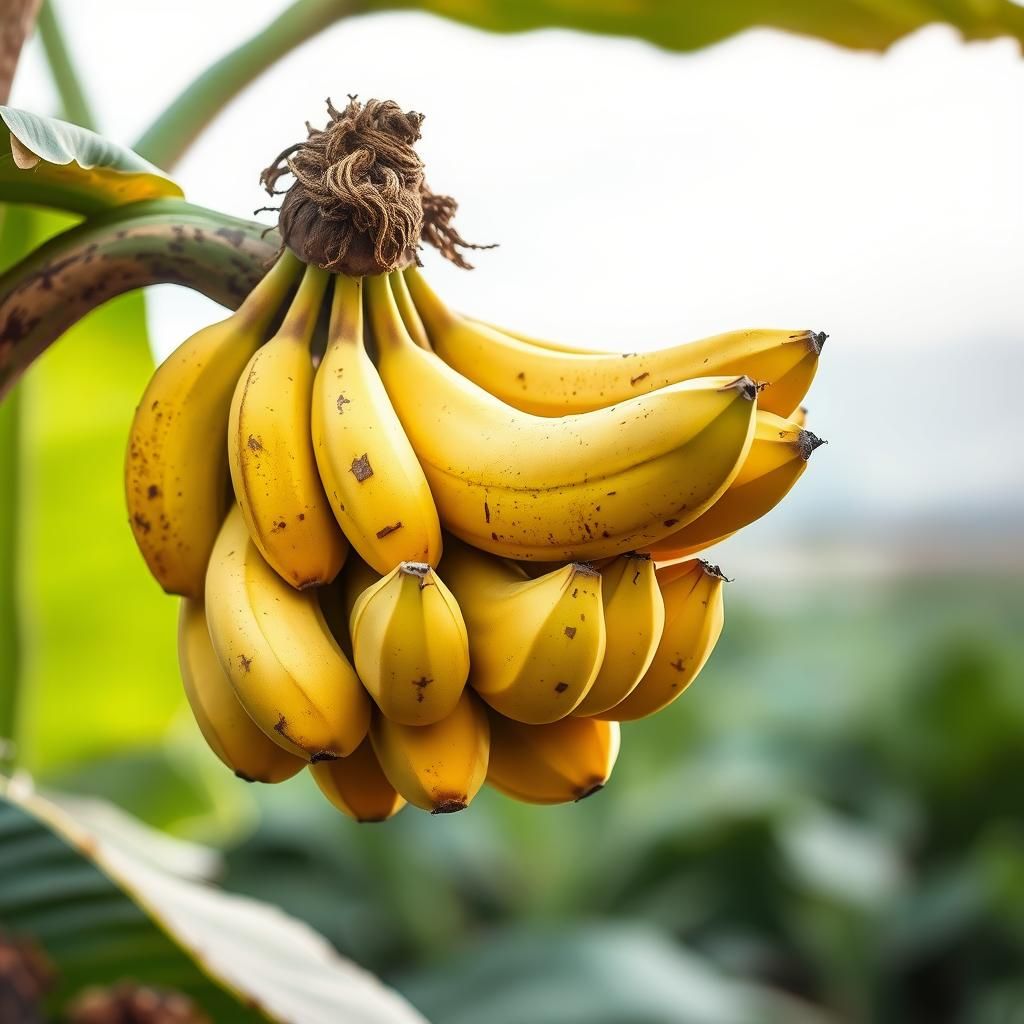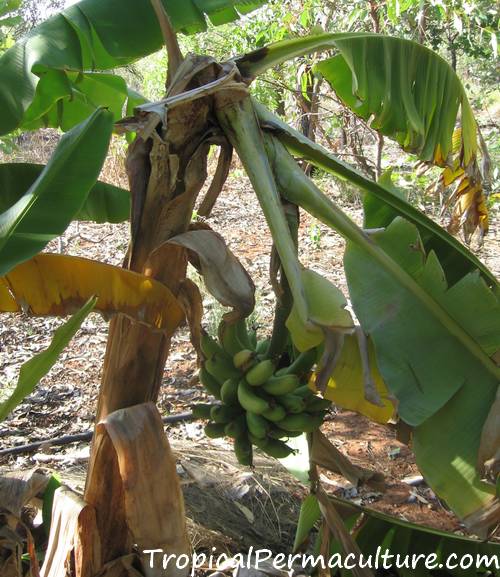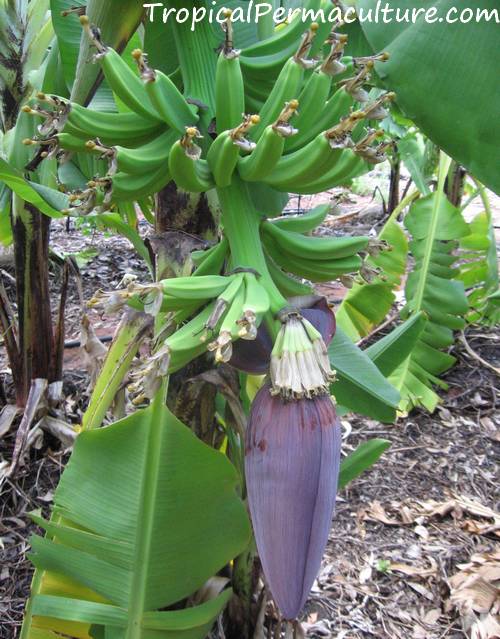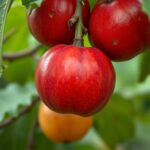How Difficult Is It to Grow Bananas? Everything You Need to Know for Success

Growing bananas can be an incredibly rewarding endeavor, but it also comes with its own set of challenges. Whether you're a seasoned gardener or a curious beginner, understanding the intricacies of banana cultivation is essential for success. This article will explore the various factors that influence banana growth, including climate requirements, soil conditions, and pest management. Additionally, we'll provide tips and tricks to help you overcome common obstacles and ensure a bountiful harvest. Dive in to discover everything you need to know about nurturing these tropical wonders in your own backyard.
How Difficult is it to Grow Bananas?
Growing bananas can be a relatively challenging task, primarily due to their specific climate requirements and the need for careful maintenance. These tropical plants thrive in warm and humid environments, requiring consistent temperatures between 75°F and 95°F. Additionally, they demand well-draining soil that retains moisture without becoming waterlogged. Pest management is another critical aspect, as banana plants are prone to various diseases and pests such as Black Sigatoka and banana weevils. Therefore, aspiring banana growers must invest time and effort into monitoring their plants, ensuring they meet these conditions, and providing the necessary care to achieve a successful yield.
Climate Requirements
The ideal climate for growing bananas involves warm temperatures and high humidity. These plants flourish in tropical and subtropical regions where temperatures rarely drop below 50°F. Optimal growth occurs between 75°F and 95°F, which facilitates the development of the fruit. Additionally, humidity levels should ideally be above 50%, as this environment prevents the leaves from drying out and promotes healthy growth.
Soil Conditions
Bananas require specific soil conditions to thrive. They prefer well-draining soil rich in organic matter, which can hold moisture yet drain excess water to avoid root rot. A soil pH between 5.5 and 7.0 is optimal for banana plants. Amending the soil with compost or aged manure can enhance fertility, ensuring the plants receive adequate nutrients for robust growth.
Pest Management
One of the significant challenges in growing bananas is managing pests and diseases. Common issues include infestations from banana weevils, which can severely damage the plant's roots, and fungal diseases like Black Sigatoka, which affects the leaves and reduces yield. Regular monitoring, employing crop rotation, and using resistant varieties can help in minimizing these threats.
Watering Requirements
Bananas have high watering requirements due to their large leaves and fruit production. They need consistent moisture, ideally through deep watering once or twice a week, depending on rainfall. It's crucial to ensure that the soil does not become too saturated, as waterlogged conditions can lead to root rot. Mulching around the base can help retain soil moisture while preventing weeds.
Harvest Timing
Knowing the correct harvest timing is essential in banana cultivation. Bananas usually take about 9 to 12 months to mature after planting, depending on the variety and growing conditions. Growers should look for signs such as the roundness of the fruit and the yellowing of the skin. Harvesting at the right time ensures optimal taste and texture, as leaving them too late can result in overripeness and loss of quality.
| Aspect | Recommendation |
|---|---|
| Climate | 75°F to 95°F with high humidity |
| Soil | Well-draining, rich in organic matter |
| Pests | Monitor regularly; manage promptly |
| Water | Deep watering, avoid saturation |
| Harvest | 9-12 months; look for ripening signs |
Are bananas difficult to grow?

The cultivation of bananas is often perceived as relatively easy due to their tropical origins and adaptability. However, there are several factors that contribute to the complexity of growing bananas successfully.
Climate Requirements
Bananas thrive best in tropical and subtropical climates. They require consistent warmth and high humidity levels. Specific environmental conditions must be met for optimal growth. Key climate factors include:
- Temperature: Ideal temperatures for banana plants range from 75°F to 95°F (24°C to 35°C).
- Rainfall: Adequate rainfall of around 40-100 inches (1000-2500 mm) annually is necessary.
- Wind protection: The large leaves of banana plants make them susceptible to wind damage, necessitating strategic placement or barriers.
Soil Conditions
The type and quality of soil play a critical role in banana cultivation. They prefer well-drained, loamy, and nutrient-rich soils. Essential soil conditions include:
- pH level: A slightly acidic to neutral pH (5.5 to 7.0) is ideal for healthy growth.
- Drainage: Poorly drained soil can lead to root rot, making adequate drainage vital.
- Nutrient availability: Bananas need essential nutrients like nitrogen, phosphorus, and potassium for robust growth.
Pest and Disease Management
Bananas are susceptible to a range of pests and diseases, which can complicate their cultivation. Key considerations include:
See also:
- Common pests: Nematodes, aphids, and banana weevils can cause significant damage if not managed.
- Diseases: Fungal diseases like Panama disease and black Sigatoka can devastate crops.
- Management strategies: Integrated pest management (IPM) practices, including crop rotation and biological control, are essential.
Space and Plant Structure
Banana plants can grow quite tall and require adequate space to thrive. This aspect of cultivation needs careful planning:
- Spacing: Careful spacing (usually 6 to 10 feet apart) is necessary to ensure good air circulation and access to sunlight.
- Pseudostems: The plants produce strong pseudostems that can topple over with strong winds if not anchored properly.
- Harvesting concerns: Due to their size, bananas require thoughtful planning for ease of harvest.
Watering Needs
Proper watering is crucial for successful banana cultivation, as too much or too little water can be detrimental:
- Irrigation: Regular irrigation may be necessary in drier climates or during prolonged dry spells.
- Moisture retention: Mulching can help retain soil moisture and improve soil health.
- Drainage: It's important to avoid waterlogging, as this can lead to root diseases.
Are banana trees high maintenance?

Banana trees are often considered low maintenance by many gardeners, but the level of care required can vary based on a few factors including climate, location, and individual tree health. Here’s a detailed look at what it takes to maintain banana trees.
Watering Needs
Banana trees require a significant amount of water to thrive. However, their watering needs can be specific depending on the climate.
- Frequency: They should be watered consistently, especially in dry spells, approximately 1 inch of water per week.
- Drought sensitivity: Banana trees may suffer if not watered enough, leading to stunted growth and poor fruit production.
- Soggy soil: It’s crucial to ensure good drainage because too much water can lead to root rot.
Soil Requirements
The type of soil plays a crucial role in the health of banana trees. They thrive in rich, well-draining soil.
- pH level: The ideal pH for banana trees is between 5.5 and 7.0.
- Organic matter: Incorporating organic materials like compost can enhance soil fertility.
- Texture: Loamy or sandy soil is preferred for optimal drainage.
Pest and Disease Management
Banana trees can be susceptible to various pests and diseases, requiring vigilant monitoring and management.
- Common pests: Aphids, spider mites, and nematodes are frequent threats.
- Disease prevention: Good air circulation and proper spacing can help prevent diseases like Panama disease.
- Control methods: Organic pesticides and regular inspections are effective in managing pest populations.
Fertilization
Proper fertilization is essential for banana trees to reach their full potential.
- Nutrient needs: They benefit from a balanced fertilizer with nitrogen, phosphorus, and potassium.
- Application schedule: Fertilize every 6-8 weeks during the growing season.
- Organic options: Options like manure or bone meal can be beneficial as natural fertilizers.
Environmental Considerations
The environment in which banana trees are grown greatly impacts their maintenance needs.
- Sunlight: Banana trees thrive in full sun, needing 6-8 hours of direct sunlight daily.
- Temperature: They grow best in warm climates, typically between 75°F and 95°F.
- Wind protection: Strong winds can damage large leaves, so providing some form of windbreak can be helpful.
What US states can grow bananas?

The cultivation of bananas in the United States is primarily limited to specific states that provide the warm, tropical climates necessary for the growth of these plants. Generally, the states where bananas can be successfully grown are located in the southern region of the country, particularly in areas where the climate is suitable for tropical fruits.
States Suitable for Banana Cultivation
In the U.S., the primary states that can grow bananas include:
See also:
- Florida
- California
- Hawaii
- Texas
- Puerto Rico (a territory)
These states have favorable temperature ranges and enough sunshine for bananas to thrive. The average temperature in these regions typically doesn’t drop below 32°F (0°C), which is crucial for the growth of banana plants.
Banana Varieties and Their Growth Conditions
Several banana varieties can be grown in the U.S., each requiring specific conditions:
- Cavendish: This is the most common commercial variety.
- Apple Banana: A smaller, sweeter variety suitable for home gardens.
- Dwarf Brazilian: A compact variety ideal for limited spaces.
Banana plants generally require well-drained soil and a sheltered location to protect them from strong winds. Adequate water and humidity levels are also essential for optimal growth.
Climate Requirements for Growing Bananas
Bananas thrive in regions with a specific climate profile:
- Temperature: Ideally, between 75°F and 95°F (24°C and 35°C).
- Humidity: Preferably around 50% to 90% humidity.
- Frost Free: Areas with no frost are critical for growing bananas successfully.
Cultivating bananas in non-tropical states often results in failure due to cold temperatures or frost, which can kill the plants.
Soil and Nutritional Needs
The soil quality plays a significant role in the successful growth of bananas:
- Drainage: Soil must be well-drained to prevent waterlogging.
- Fertility: Nutrient-rich soil with organic matter promotes healthy growth.
- pH Level: A slightly acidic to neutral pH range of 5.5 to 7.0 is optimal.
Proper management of soil conditions will help ensure that banana plants obtain the necessary nutrients for optimal growth and fruit production.
Challenges in Banana Cultivation
Growing bananas in the U.S. does come with its challenges:
- Pests: Common pests include aphids and spider mites that can affect banana health.
- Diseases: Fungal infections such as Panama disease pose a significant threat.
- Climate Variation: Unpredictable weather patterns can impact growth cycles.
Effective pest management and disease prevention strategies are critical for successful banana cultivation in these regions.
Questions from Our Readers
How difficult is it to grow bananas indoors?
Growing bananas indoors can be challenging but is definitely possible with the right conditions. You'll need to provide a warm environment, plenty of light, and a large enough space for the plants to thrive. Additionally, maintaining adequate humidity and moisture is crucial for their growth.
What type of soil is best for banana plants?
Banana plants prefer well-draining soil that is rich in organic matter. Incorporating compost or aged manure is beneficial, as it enhances the soil's nutrient content. A pH level between 5.5 and 7.0 is ideal, making it essential to test your soil if you're uncertain.
How much water do banana plants need?
Banana plants require a consistent supply of water to grow effectively, needing about 1-2 inches of water per week, depending on the climate. It's important to keep the soil moist, but not waterlogged, as this can lead to root rot and other issues.
See also:
How long does it take for banana plants to bear fruit?
Banana plants typically take 9 to 12 months to produce fruit after planting, depending on the variety and growing conditions. Factors such as temperature, light, and nutrient levels can significantly impact the time it takes for bananas to mature.

If you want to read more articles like How Difficult Is It to Grow Bananas? Everything You Need to Know for Success, we recommend you check out our Plants category.
Leave a Reply
Related Articles